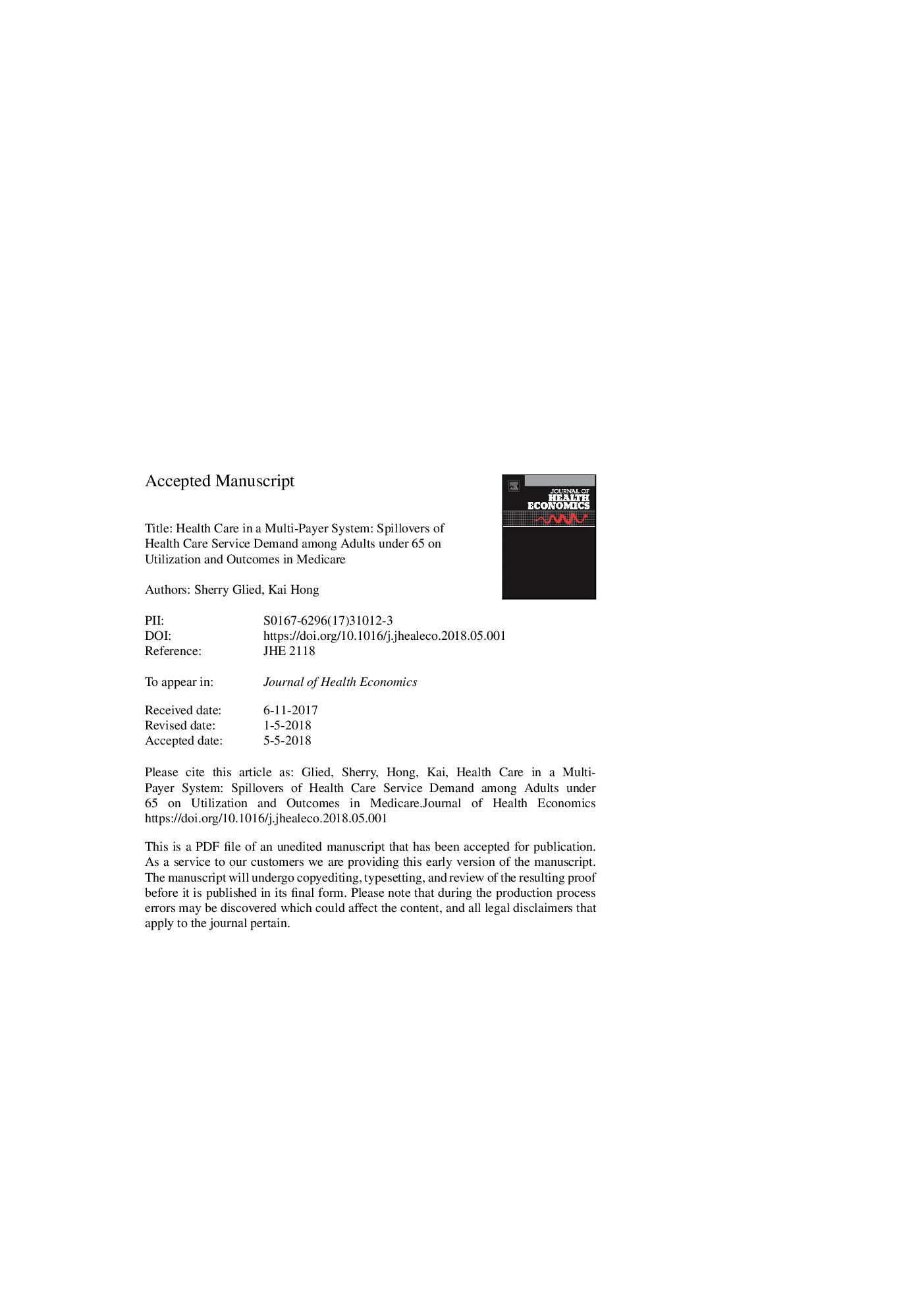| Article ID | Journal | Published Year | Pages | File Type |
|---|---|---|---|---|
| 7362732 | Journal of Health Economics | 2018 | 45 Pages |
Abstract
This paper examines, theoretically and empirically, how changes in the demand for health insurance and medical services in the non-Medicare population â coverage eligibility changes for parents and the firm size composition of employment â spill over and affect health insurance coverage and how these factors affect per beneficiary Medicare spending. We find that factors that increase coverage and hence demand for medical services in the non-Medicare population generate contemporaneous decreases in per beneficiary Medicare spending and utilization, particularly for high variation services. Moreover, these increases in the demand for medical services in the non-Medicare population are not associated with increases in the total quantity of physician services supplied. Finally, we find that the higher Medicare spending associated with lower insurance coverage rates in the non-Medicare population does not generate improvements in measures of Medicare patients' well-being, such as patient experience of care, ambulatory-care sensitive admissions, and mortality.
Related Topics
Health Sciences
Medicine and Dentistry
Public Health and Health Policy
Authors
Sherry Glied, Kai Hong,
